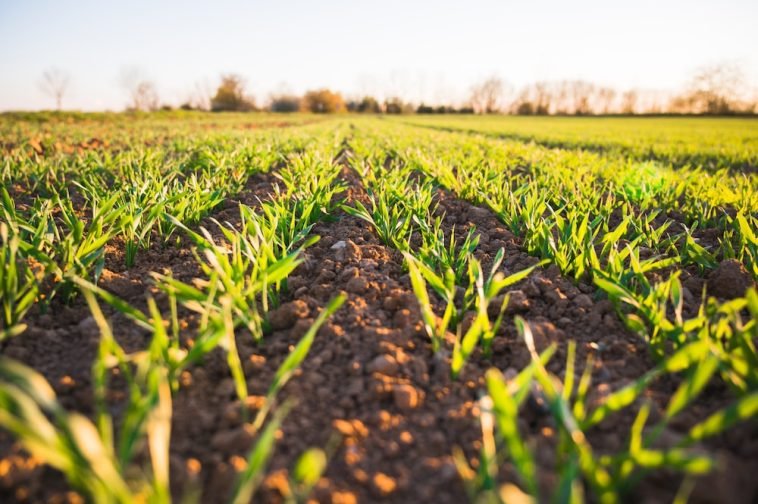Introduction.
Starting an agricultural business can open up a world of opportunity and financial rewards.
I have seen firsthand how agriculture not only feeds communities but also creates economic growth in rural and urban areas alike.
With the rising interest in locally grown food and sustainable practices, there is never been a better time to explore the possibilities that an agricultural venture can offer.
The Agricultural Landscape
Agriculture is a vital part of our society. It supports millions of jobs around the globe and forms the backbone of many economies.
For example, in the United States, the agricultural sector contributed nearly 1% to the GDP in 2022, and similar trends can be found in other regions around the world.
This business is more than just farming—it is a blend of tradition, innovation, and business savvy.
With new technologies like precision farming and digital tools for market analysis, even small-scale operations have the chance to compete in larger markets.
You can check out more details on government support and trends at USDA.
Planning and Starting Your Business
Before taking the plunge, it’s important to spend some time planning. I always stress that a solid business plan is key to success. Here are some steps I recommend:
Market Research: Understand the local and global market. Identify what crops or products are in demand. Use online tools, visit local farmers’ markets, and talk to experts. Reliable sources like the Small Business Administration (SBA) can help guide your research.
Business Plan Development: Outline your goals, expected expenses, and projected income. A clear plan will help you secure funding and guide your decisions. Think about aspects such as production methods, target customers, and distribution channels.
Choosing Your Niche: Agriculture is broad. You might decide to focus on organic produce, speciality crops, or even value-added products like jams or artisanal cheeses. Select a niche that aligns with your passion and local market needs.
Location and Resources: The success of your venture often depends on where you set up. Consider factors like climate, soil quality, access to water, and proximity to markets. Your location will influence your choice of crops and production methods.
Legal and Financial Planning: Register your business, get the necessary permits, and secure your finances. Government grants, loans, and incentives are available, especially for those embracing sustainable practices. Websites like Grants.gov provide up-to-date information on available funding opportunities.
Marketing and Growth
Once your business is up and running, reaching your customers is the next big step. Marketing might seem daunting at first, but a few simple strategies can make a big difference:
Build a Story: People love to hear about the origins of their food. Sharing your journey and your commitment to quality can create a loyal customer base.
Use Digital Platforms: A website and social media profiles can be powerful tools. Simple posts about daily life on the farm, new harvests, and behind-the-scenes work can engage your audience and build trust.
Local Partnerships: Team up with local restaurants, markets, and community-supported agriculture (CSA) programs. Personal connections and local networks often provide steady income and word-of-mouth referrals.
Customer Feedback: Listen to your customers and adjust your offerings accordingly. Building a relationship with your clients can lead to repeat business and valuable recommendations.
Overcoming Challenges
Starting an agricultural business comes with its own set of challenges. The unpredictability of weather, fluctuations in market demand, and unexpected costs can all play a role. Here’s how I approach these challenges:
Diversify Your Offerings: Don’t rely on a single crop or product. Diversification can help buffer against the impact of a poor harvest or market changes.
Stay Informed: Keep up with local weather forecasts and market trends. Joining farming cooperatives or local business groups can provide insights and support during tough times.
Embrace Technology: From simple tools that monitor soil moisture to advanced apps that track market prices, technology can help you manage risks and make informed decisions.
Seek Expert Advice: No one has all the answers. Local agricultural extension services or business mentors can offer guidance tailored to your region and goals. For example, many universities offer extension programs that provide free or low-cost consulting to new farmers.
Funding and Financial Support
Funding can be one of the biggest hurdles when starting an agricultural business. There are several options available:
Government Programs: Many governments offer grants, low-interest loans, and tax incentives for new agricultural ventures. The USDA is a good starting point to understand what might be available in your area.
Private Investors: Sometimes, partnering with a local investor or joining a cooperative can provide the necessary capital to get started. Local chambers of commerce or farming associations might have leads on investors interested in agricultural projects.
Crowdfunding: If your idea has a unique twist or a strong community appeal, crowdfunding platforms can help you raise money while also building an early customer base.
Personal Savings and Loans: A traditional approach is to use personal funds or secure a small business loan. Detailed planning and a clear demonstration of potential returns can help persuade lenders to back your venture.
The Role of Innovation in Agriculture
Agriculture is not just about planting and harvesting; it is about innovating every step of the process.
Modern agricultural practices include using drones for monitoring fields, employing smart irrigation systems, and even implementing blockchain technology to track food safety and authenticity.
These innovations can improve efficiency and profitability, making your business more competitive.
I encourage you to explore local workshops or online courses to get up to speed with these technologies.
Frequently Asked Questions
What is the first step in starting an agricultural business?
Begin with thorough market research and a clear business plan. Understanding your local market and knowing what products will be in demand sets a strong foundation.
How much money do I need to start?
The amount varies depending on your niche and scale. Small-scale ventures might start with a few thousand dollars, while larger operations could require significant investment. Research available grants and loans to help offset costs.
How do I secure funding?
Look into government programs, private investors, crowdfunding, and traditional bank loans. Detailed planning and a solid business case can make a big difference when pitching your idea.
What are the biggest challenges in agriculture?
Weather variability, market fluctuations, and unexpected expenses are common hurdles. Diversifying your products and staying informed about trends can help manage these risks.
Is technology really important in agriculture?
Yes, technology can greatly improve efficiency and decision-making. From automated irrigation systems to digital market analysis tools, embracing innovation can boost your success.
Further Resources
- USDA: For detailed information on funding, research, and best practices, visit USDA.gov.
- Small Business Administration (SBA): Explore funding options and business planning resources at SBA.gov.
- Local Agricultural Extension Services: Many states and regions have extension services that offer free or low-cost advice. Contact your local office for more details.
- Online Courses: Websites like Coursera or Udemy offer courses on modern agricultural practices and business management that can give you an edge in the market.
Conclusion
Starting an agricultural business is a journey that blends hard work with the chance to make a lasting impact.
It offers the possibility to contribute to community well-being while building a profitable enterprise.
I believe that with careful planning, the right use of technology, and a willingness to adapt, anyone can build a successful agricultural venture.
The path might not always be smooth, but the rewards of growing a business that feeds people and creates opportunities are truly worth it.
So, what steps will you take to start your agricultural business and make money?





Great Article! I think you could even start a florist business where you grow your own flowers to use in different products and arrangements. And also spice farming. There are also plenty of different plants you can grow that will allow you to create various spices that you can process and sell.
yea, you can try it out, becoming a florist is also very cool